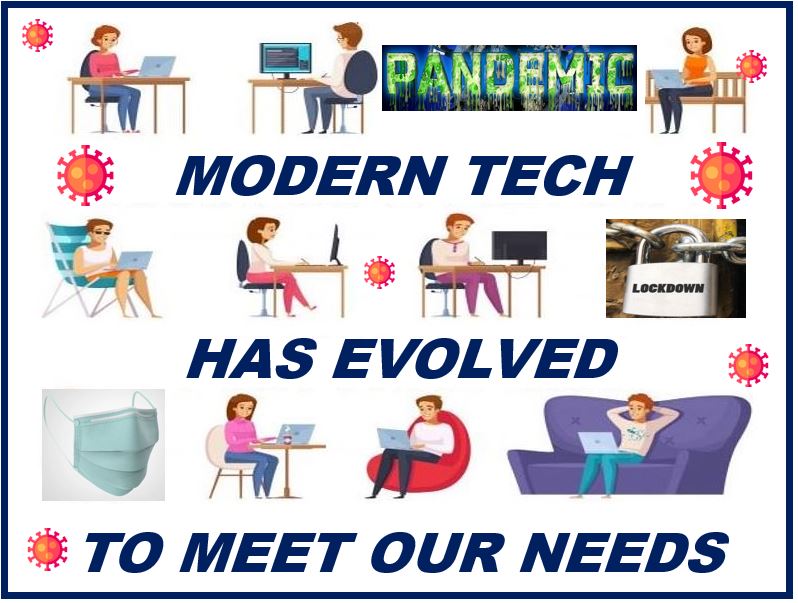Technology has always played a central part in human advancement. Now, however, as the global populations struggles amidst a pandemic, it has a new and extensive role which is undoubtedly defining the COVID-19 response, delivering valuable aid, and facilitating groundbreaking solutions.

New Orleans entrepreneur Chad E. Harris has closely followed technology’s evolving role in the global society since the onset of the novel coronavirus earlier this year. On a wide scale, the pandemic has inarguably upended all aspects of life, creating difficulties and barriers in even the minute sectors.
Presented with this seemingly impossible set of unforeseen problems, innovative companies and individuals have delivered cutting-edge tech resources to help the global population navigate this turbulent time. While technological advancement has yet to deliver solutions on all fronts, it has, in many areas, successfully adapted to deliver essential relief where it matters most.
Supporting Telehealth Solutions
Perhaps no sector has been more dramatically impacted by the novel coronavirus than the world of healthcare and medical research. For many countries, the virus’ outbreak quickly lead to shortages of protective equipment, ventilators, tests, and resources. With emergency rooms reaching capacity and health professionals increasingly stretched thin, hospitals, general care practitioners, and researchers have all turned to technological solutions to bridge the gap and bring relief.
The increased availability of telehealth solutions, according to Chad E. Harris, has lessened the need for in-person office visits while expanding care options to patients who might not otherwise have access to a medical professional. Using phone and video technology, even many clinics that previously had little or no telehealth capacity have ramped up quickly to virtually meet patient’s needs amidst the pandemic.
These telehealth tools (such as electronic consults, online therapy platforms, emergency care lines, and remote behavioral health services) allow medical professionals to extend their reach, providing a more balanced, extensive form of care that does not require physical contact or risk transmission. Innovative tech services like RubiconMD, for example, are able to quickly route patients battling COVID-19 into contact with an interdisciplinary panel of experts who are capable and prepared to deliver expert advice.
Creating New Ways to Connect
Business closures, work-from-home models, and stay-at-home mandates have limited our in-person interactions, dealing a serious blow to our social lives. Even those interactions which we had previously taken for granted—workplace conversations, coffee shop chats, coincidental grocery store encounters—are now few and far between amidst the threat of the novel coronavirus.
To help manage the negative impacts of isolation, tech tools have presents creative social solutions. These innovative resources have allowed users to use digital tools to conduct and maintain vibrant but distanced social lives, keeping them both connected and safe.
Some companies have looked toward technology to add a social element to their existing products. Netflix, for example, launched “Netflix Party” in the pandemic’s second month—a simple but innovative Chrome extension which allows friends to remotely watch movies with friends, making socially-distanced movie nights a safe possibility.Interactive online exercise programs, dynamic video calling platforms, and internet music venues are just a few of the other tech solutions serving to keep us connected while we’re apart.
These measures may seem small at first, but Chad E. Harris highlights that socially-minded tech solutions have worked wonders to promote public safety while mitigating the impacts of depression, anxiety, and other mental health conditions that could be produced or worsened by the current pandemic. New tech-centered communication tools have also been integral in spreading awareness and information regarding the virus itself, making valuable information on the pandemic more easily accessible to the general population.
Enabling Remote Work
Faced with surging coronavirus cases, many workplaces were forced to shut their office doors and send their employees home. As of the second week of March 2020, as many as 46% of American businesses had already shifted to online-only structures. Even now, as restrictions ease in some states, a considerable number of companies have chosen to mitigate the risks of COVID in their workplaces by continuing to foster remote work opportunities.
According to Chad E. Harris, these shifts have largely been made possible due to technological advancement and the development of innovative software tools. From remote desktop software and team chat apps to screen sharing platforms and new cloud storage capabilities, tech companies across the nation have risen to the challenge in the last year in order to develop cutting-edge solutions for the world’s increasingly digital workforce.
In fact, tech solutions have been so incredibly effective in meeting business needs that it’s likely many companies will continue operating as remote-only workforces even long after the pandemic resolves.
Researching the Cure
Even in just the last several months since the pandemic set in, major technological improvements have changed how government health organizations and medical workers approach the virus. Cutting-edge A.I. software, for example, have effectively utilized big data to detect and predict the virus’ spread, allowing government agency to better enact public safety measures.
Quickly advancing tech solutions have also delivered promising solutions for detecting the virus. When the SARS virus outbreak took hold at the end of 2002, it took more than 5 months to effectively sequence the virus’ genome. In comparison, modern tech has allowed today’s researchers the ability to have COVID-19’s genome successfully sequenced in less than a month. As a result, diagnostic tests could be more quickly developed, opening the door for quicker, more accessible testing than what has previously been possible.
Recent tech developments have also proven critical in creating safer, more effective treatment facilities. Given the virus’ extremely high human-to-human transmission rates, medical care facilities across the world have successfully employed medical robots to virtually conduct patient diagnosis and treatments.
Although an effective vaccine has yet to be developed, recent technological advancements have proven crucial in helping medical professionals diagnose and treat the COVID-19 virus. With time and further research, Chad E. Harris is hopeful these advancements will even give way to an effective cure.
Interesting related article: “What is Technology?”
